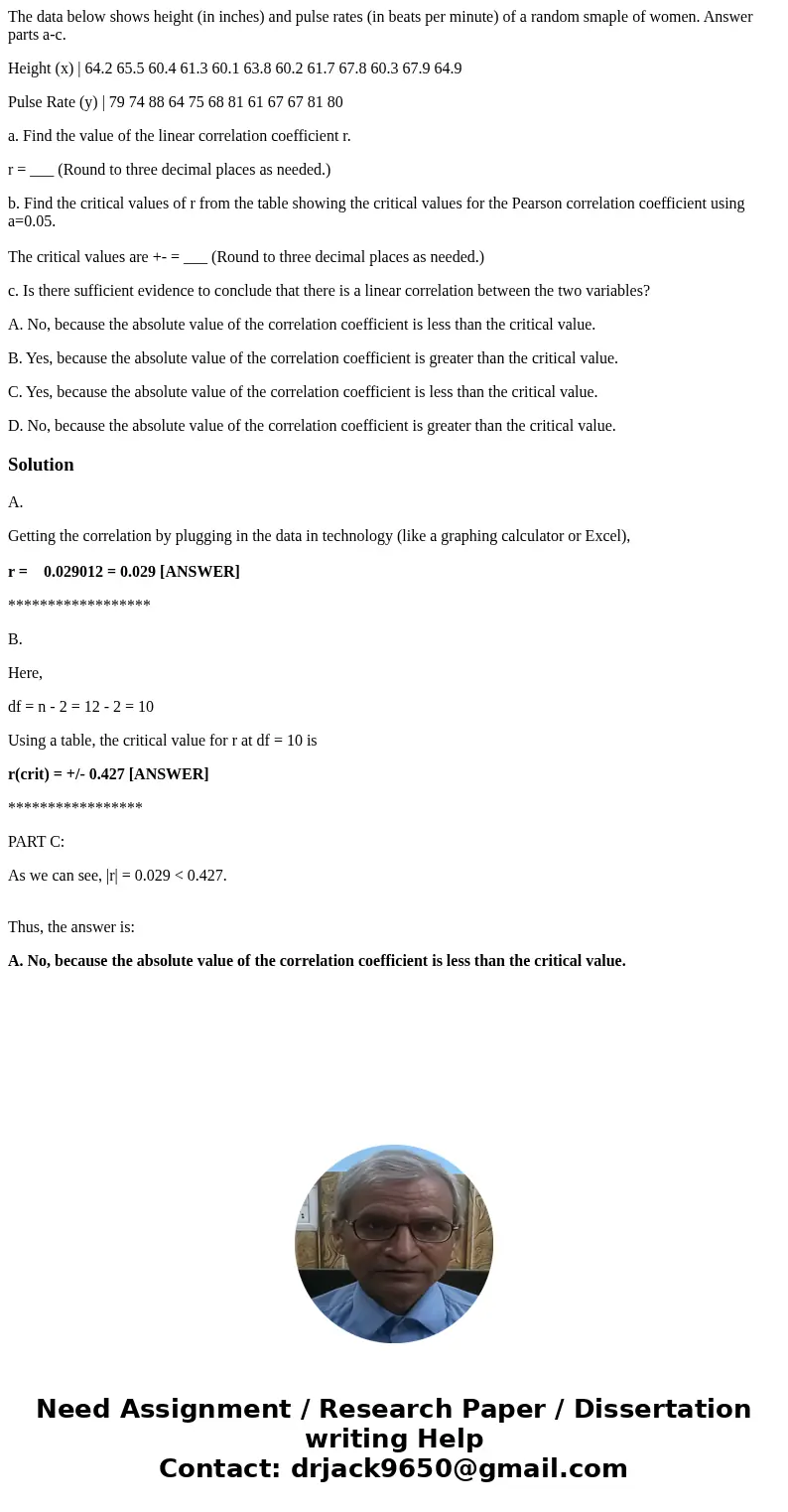The data below shows height in inches and pulse rates in bea
The data below shows height (in inches) and pulse rates (in beats per minute) of a random smaple of women. Answer parts a-c.
Height (x) | 64.2 65.5 60.4 61.3 60.1 63.8 60.2 61.7 67.8 60.3 67.9 64.9
Pulse Rate (y) | 79 74 88 64 75 68 81 61 67 67 81 80
a. Find the value of the linear correlation coefficient r.
r = ___ (Round to three decimal places as needed.)
b. Find the critical values of r from the table showing the critical values for the Pearson correlation coefficient using a=0.05.
The critical values are +- = ___ (Round to three decimal places as needed.)
c. Is there sufficient evidence to conclude that there is a linear correlation between the two variables?
A. No, because the absolute value of the correlation coefficient is less than the critical value.
B. Yes, because the absolute value of the correlation coefficient is greater than the critical value.
C. Yes, because the absolute value of the correlation coefficient is less than the critical value.
D. No, because the absolute value of the correlation coefficient is greater than the critical value.
Solution
A.
Getting the correlation by plugging in the data in technology (like a graphing calculator or Excel),
r = 0.029012 = 0.029 [ANSWER]
******************
B.
Here,
df = n - 2 = 12 - 2 = 10
Using a table, the critical value for r at df = 10 is
r(crit) = +/- 0.427 [ANSWER]
*****************
PART C:
As we can see, |r| = 0.029 < 0.427.
Thus, the answer is:
A. No, because the absolute value of the correlation coefficient is less than the critical value.

 Homework Sourse
Homework Sourse